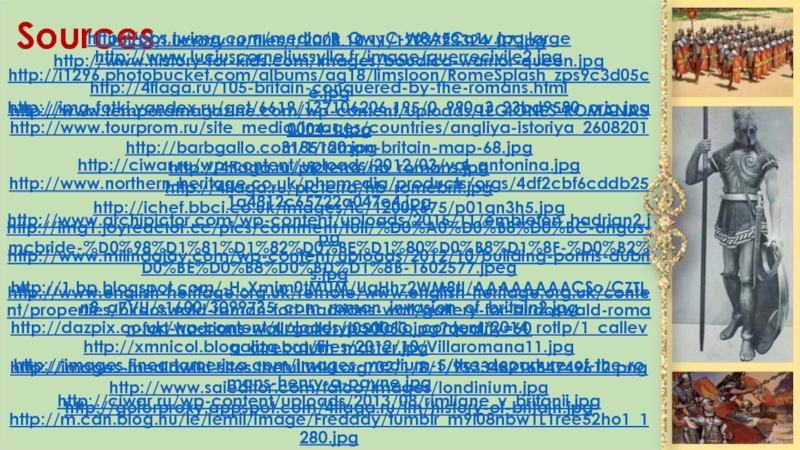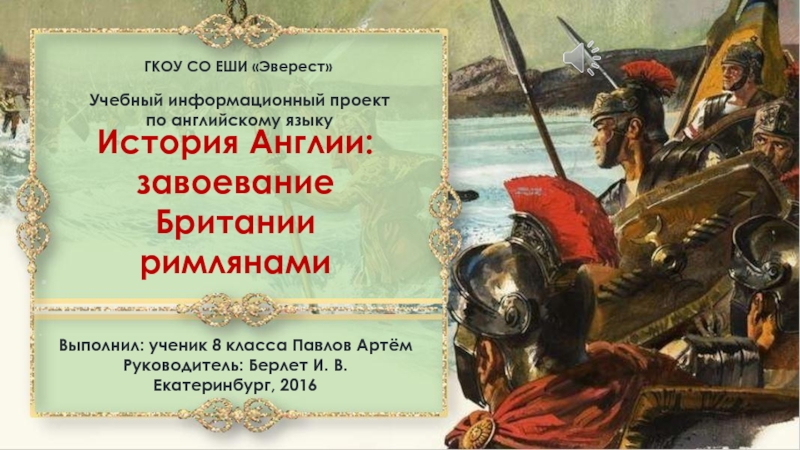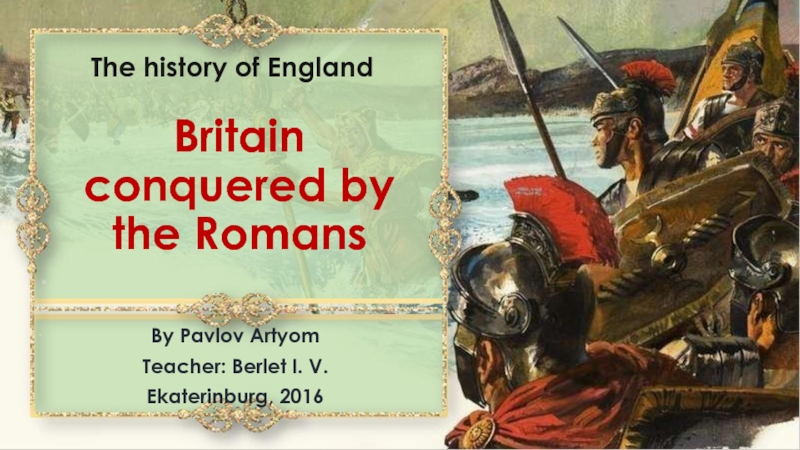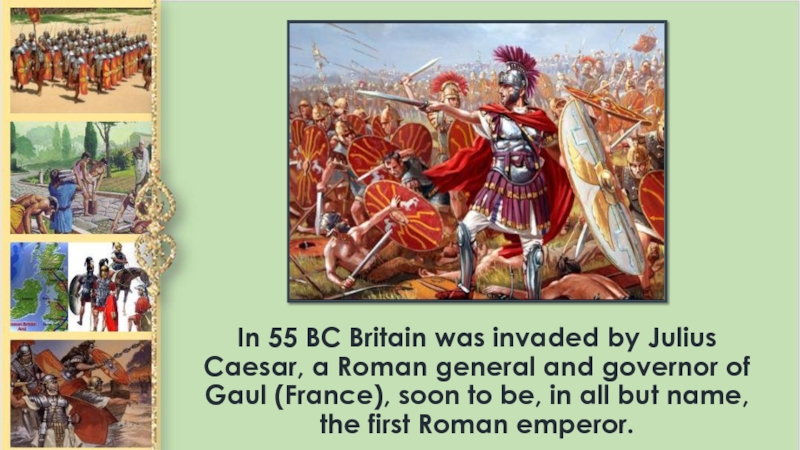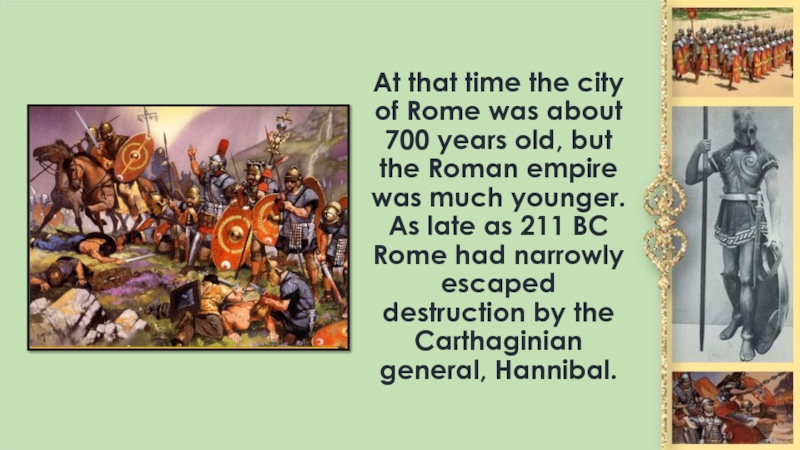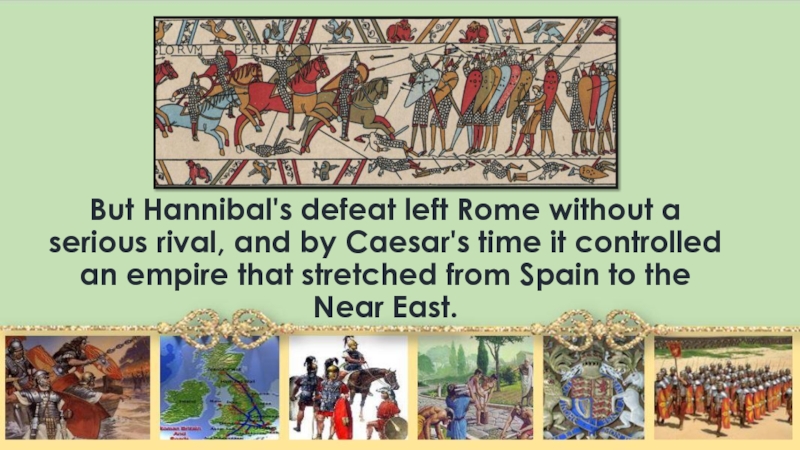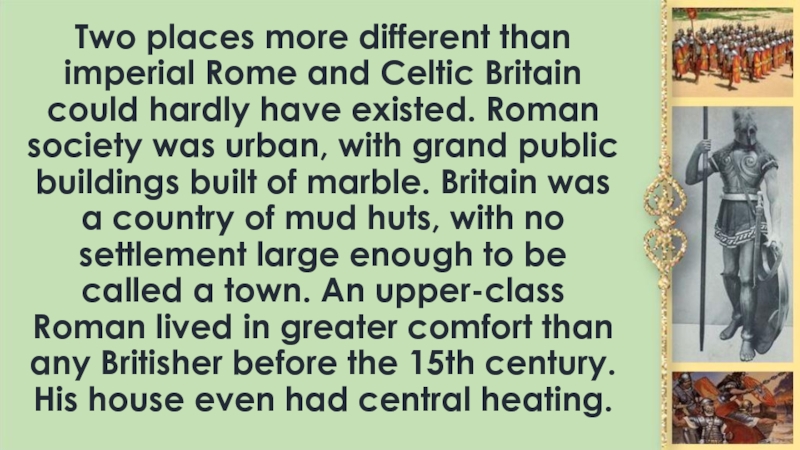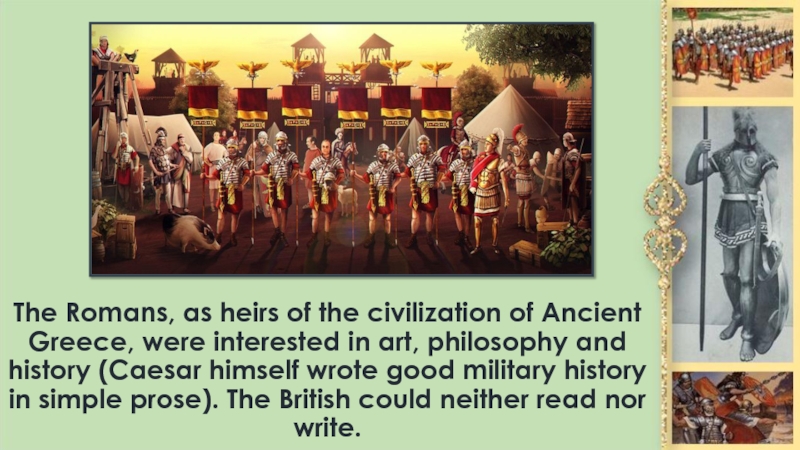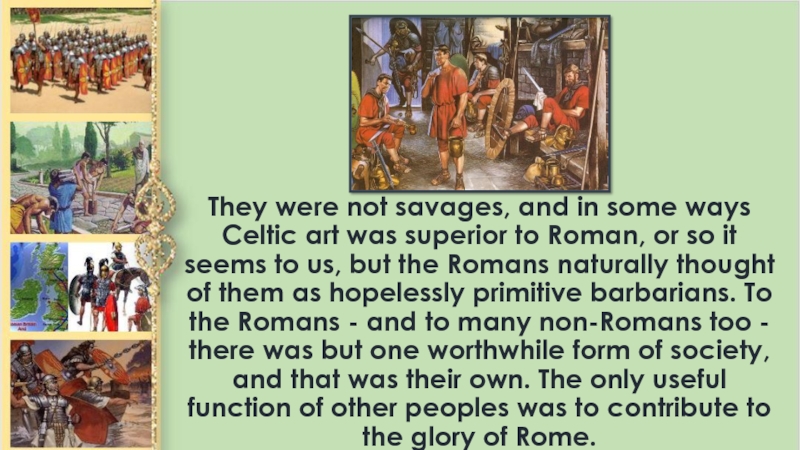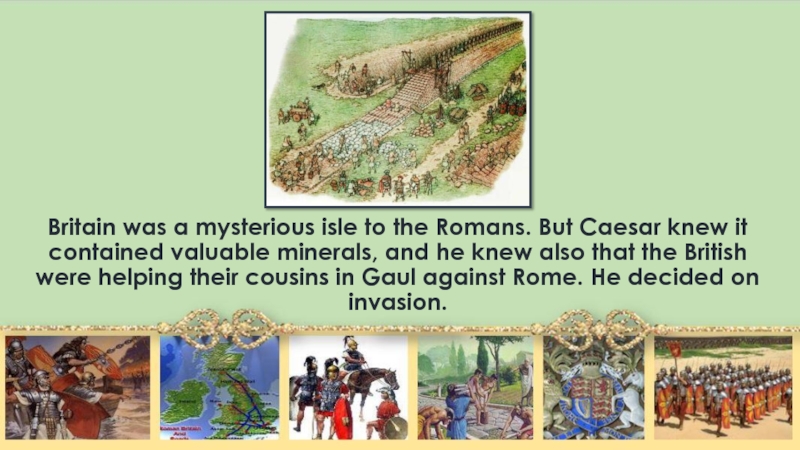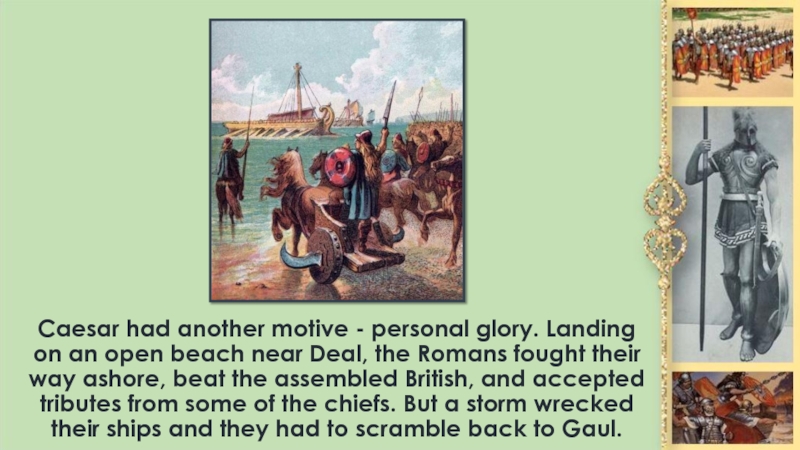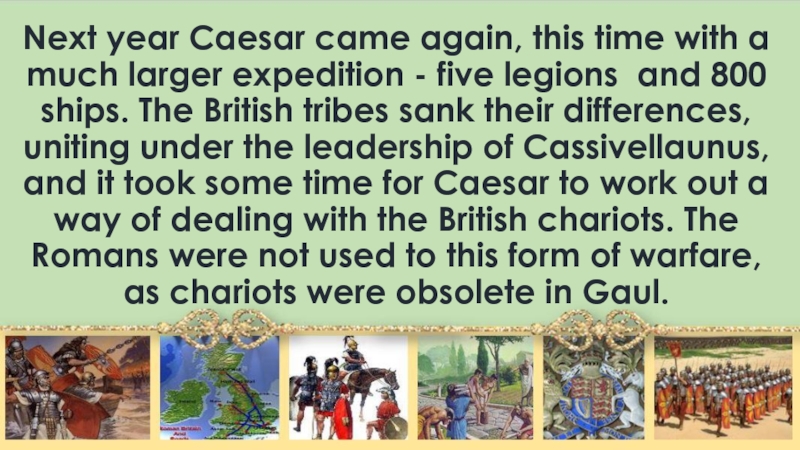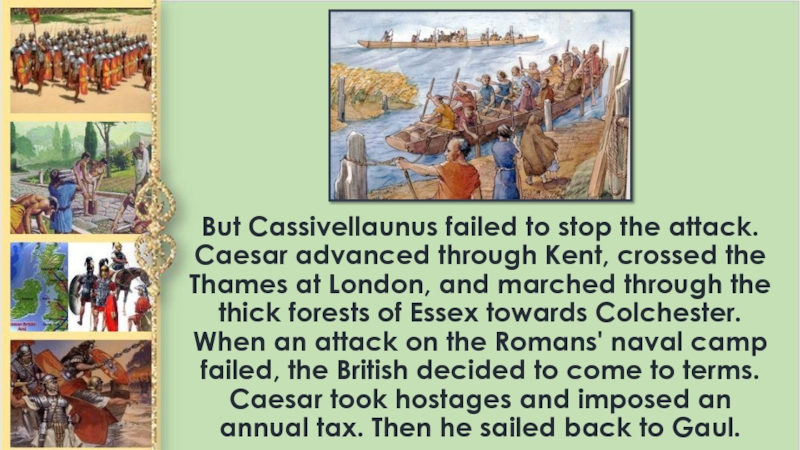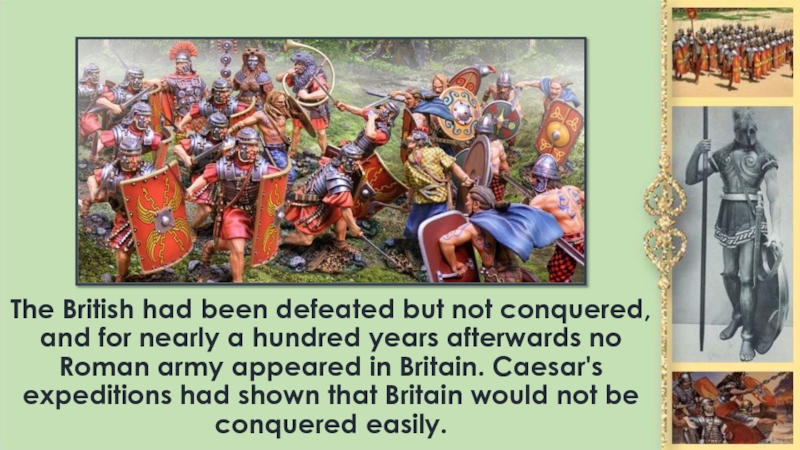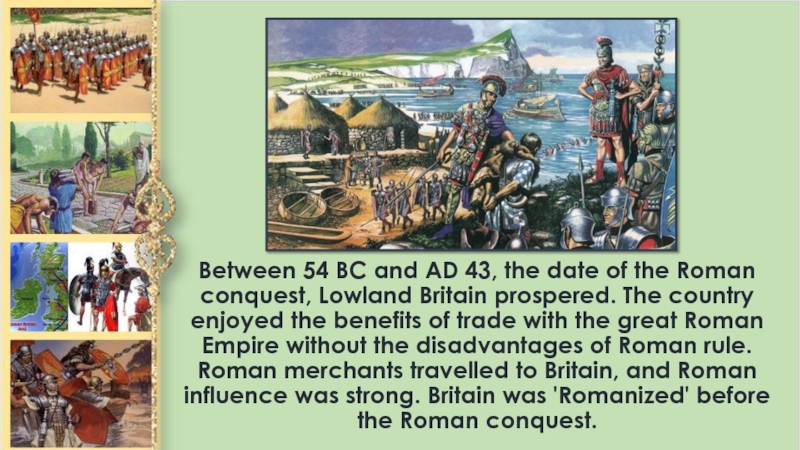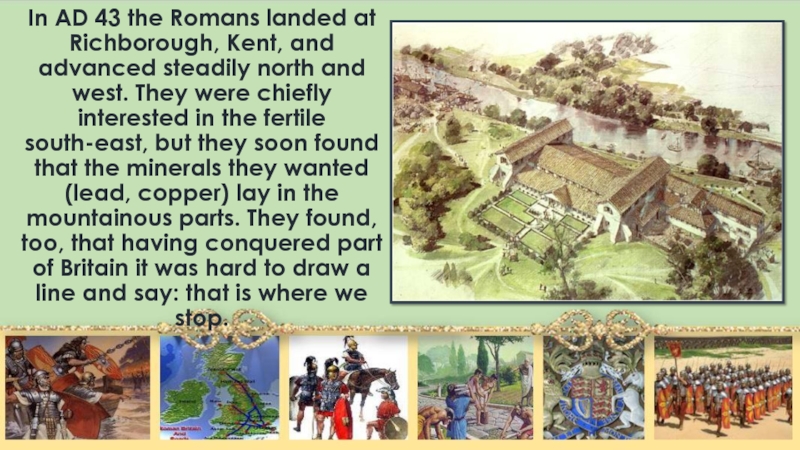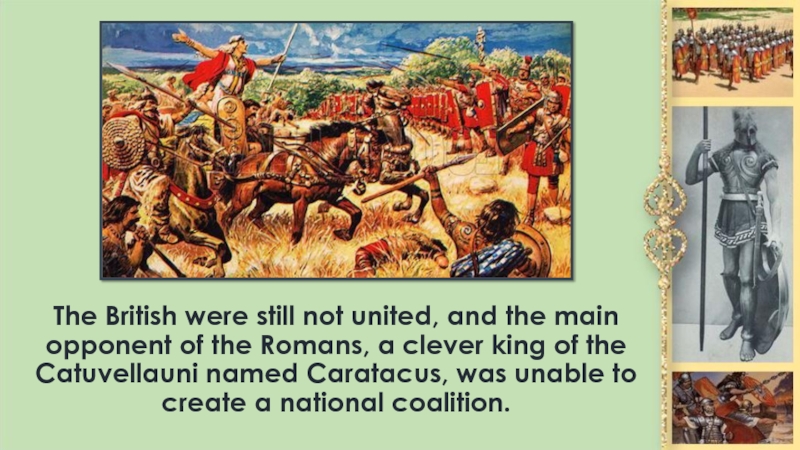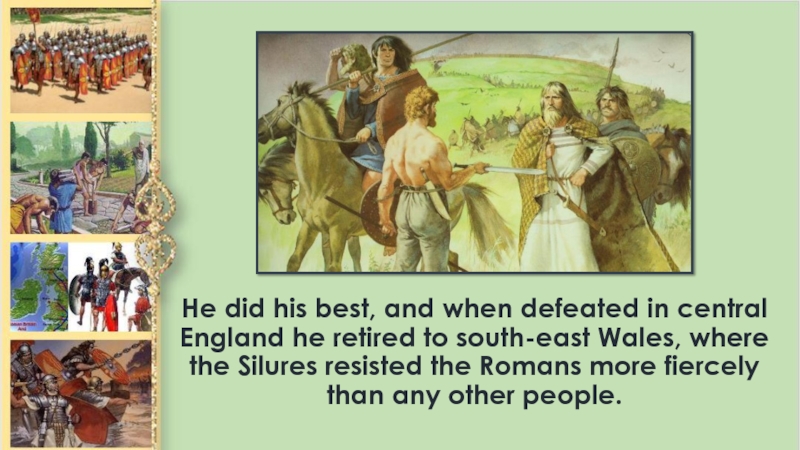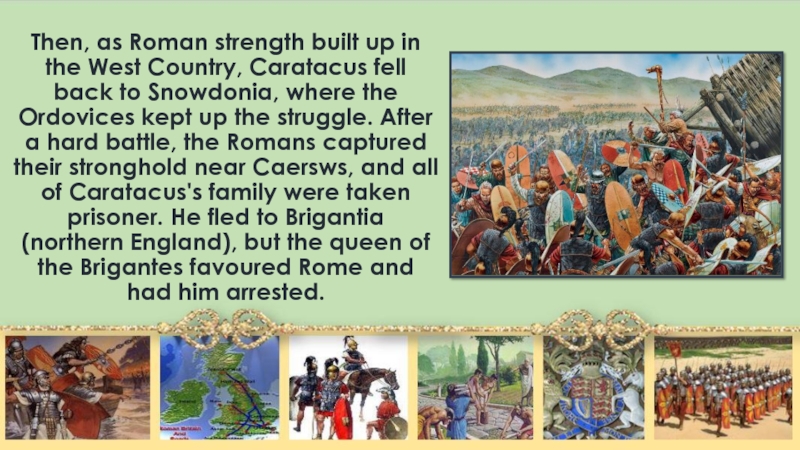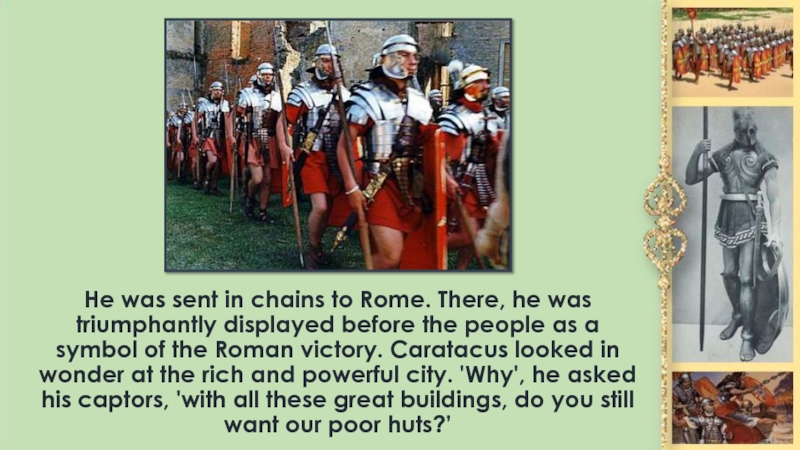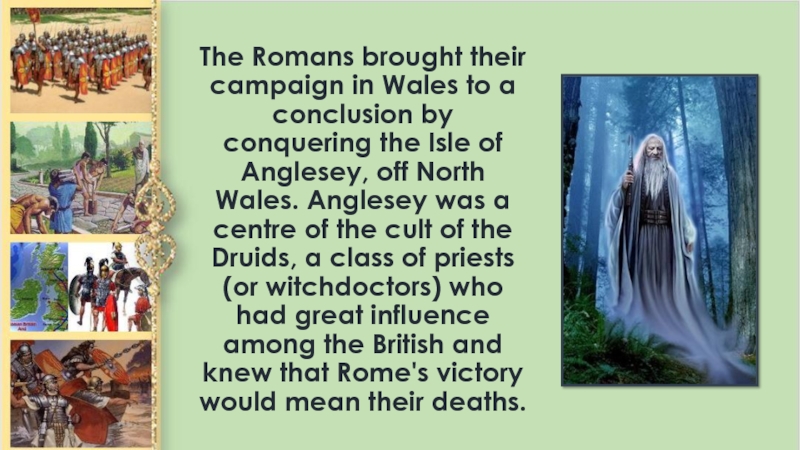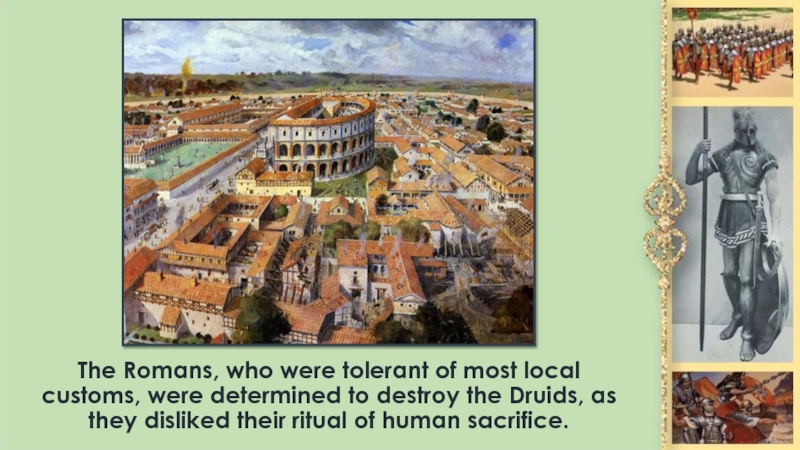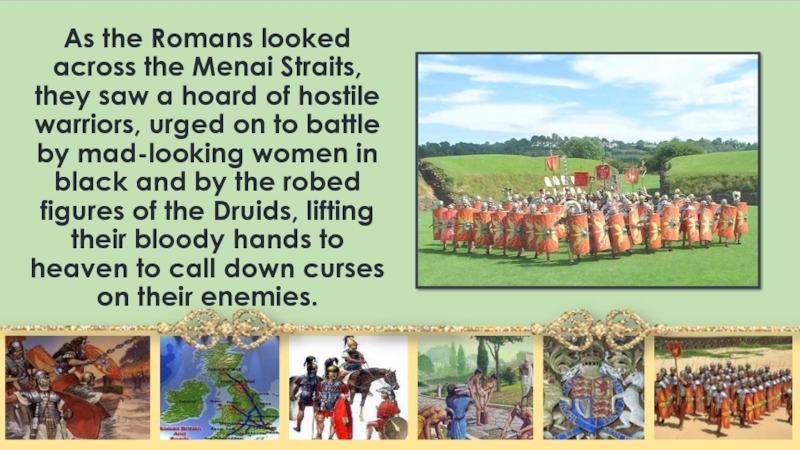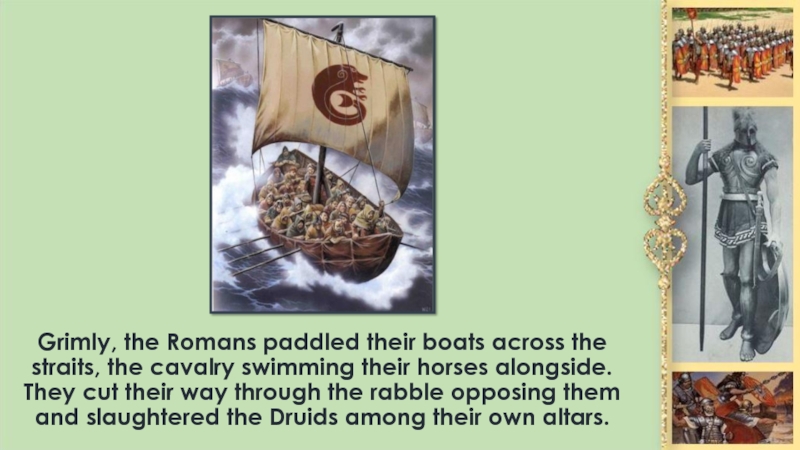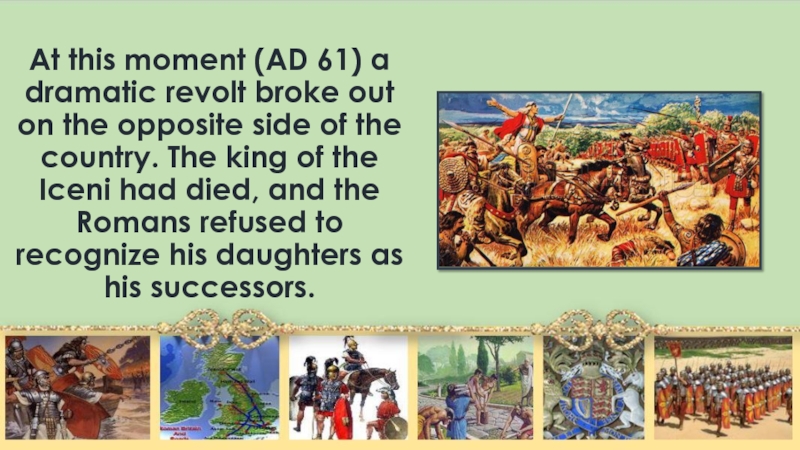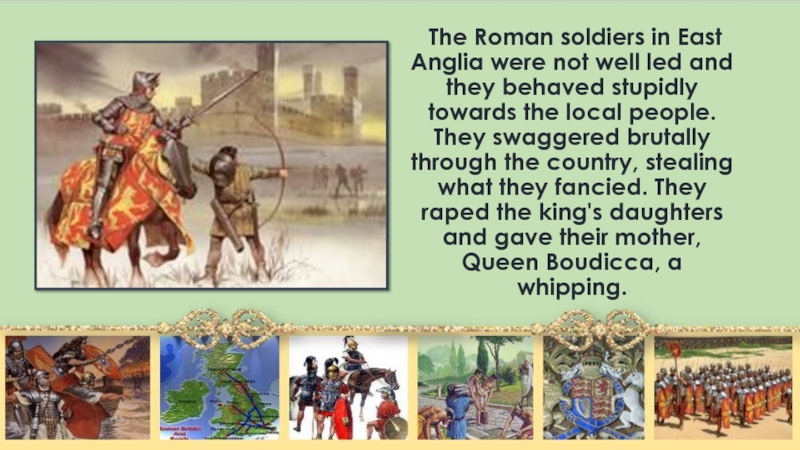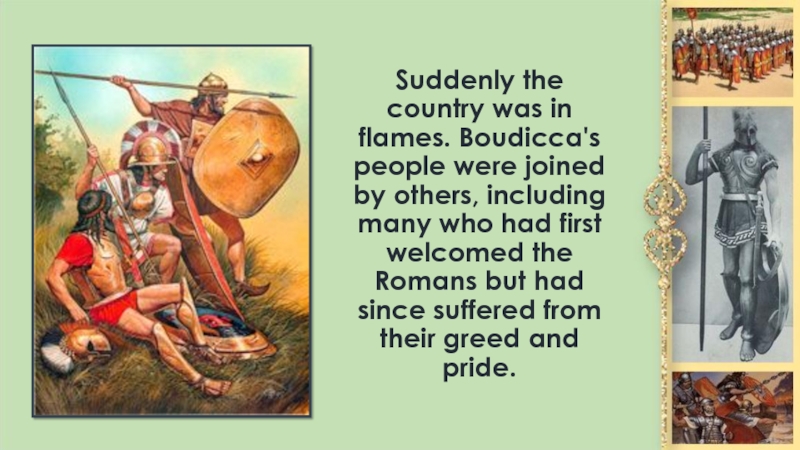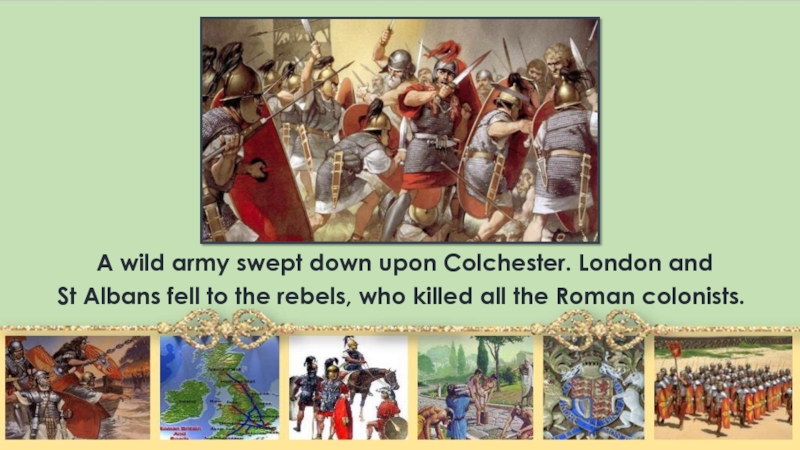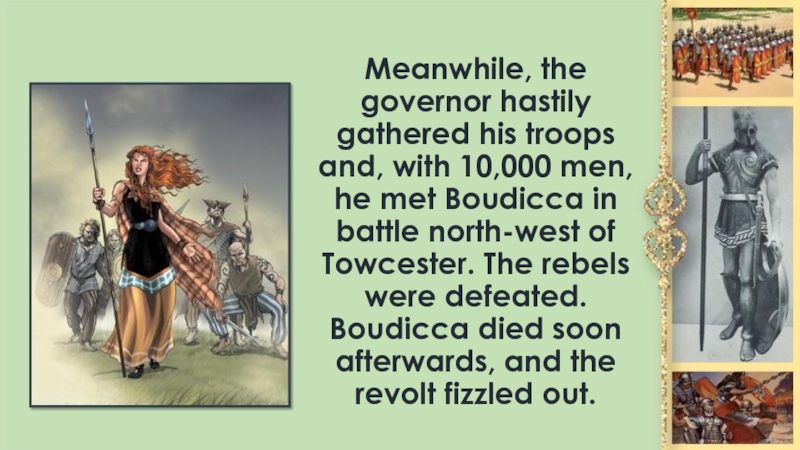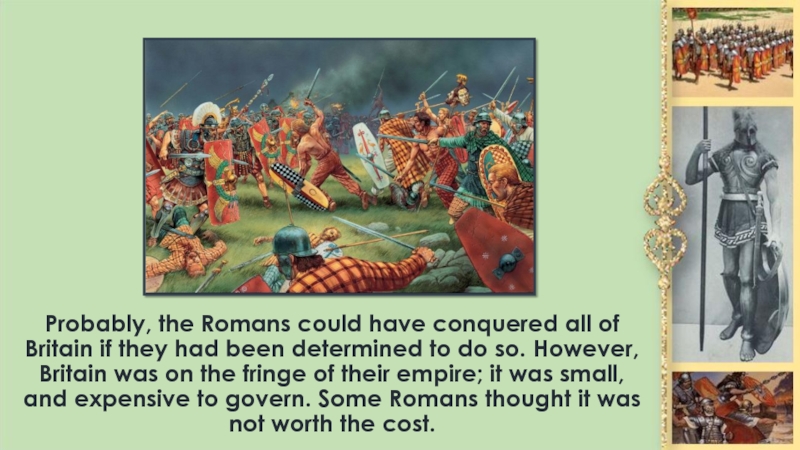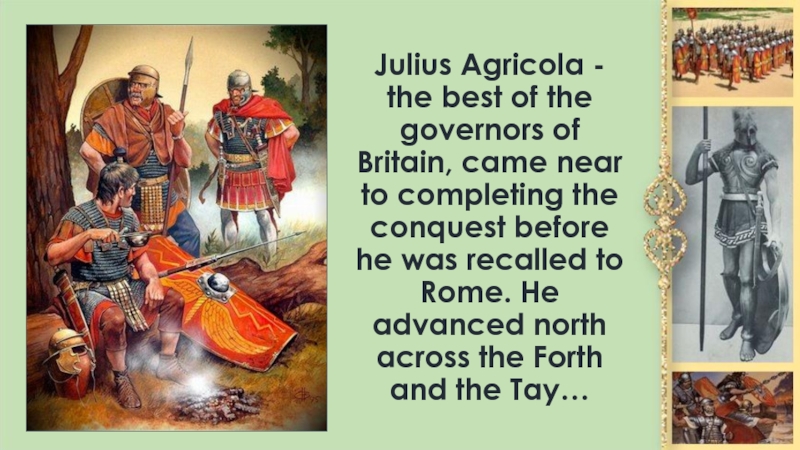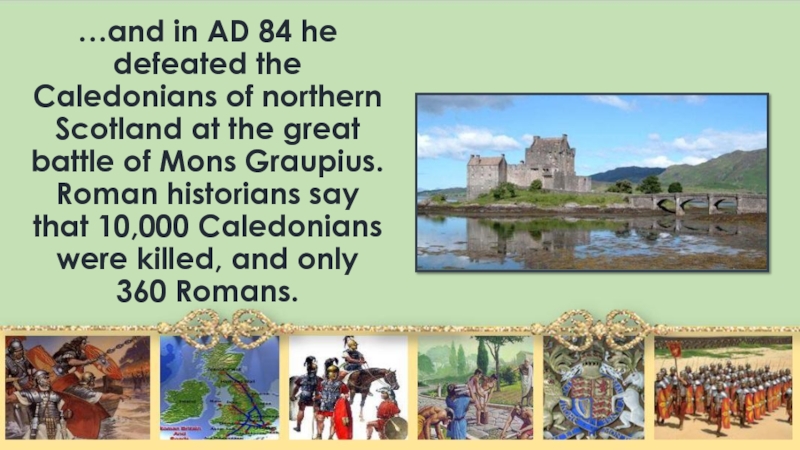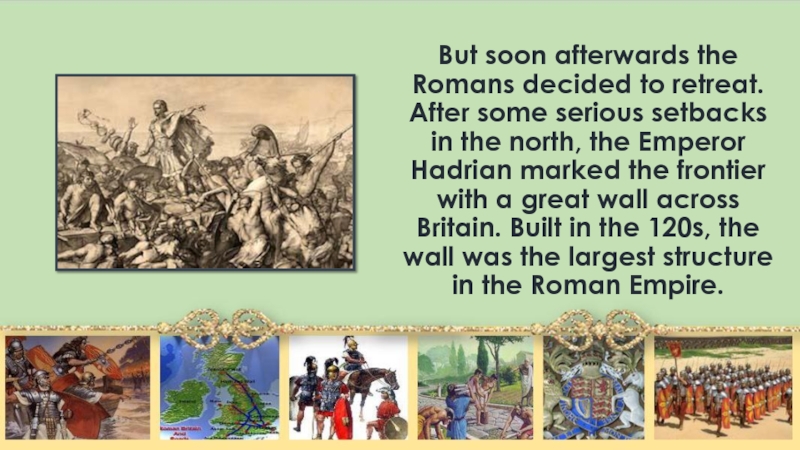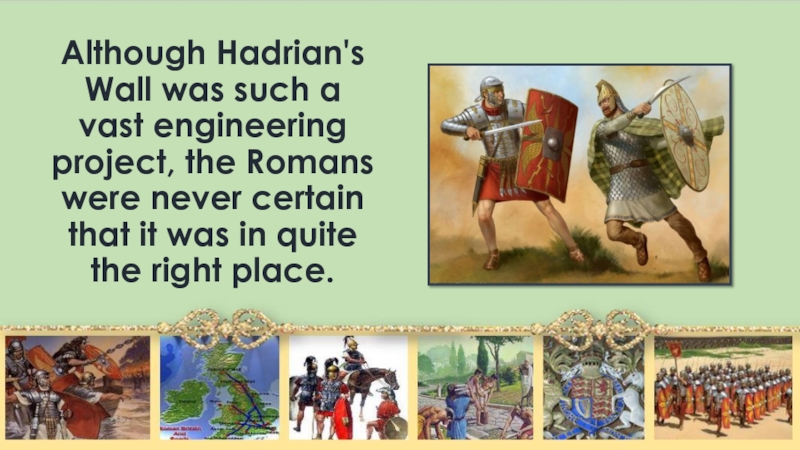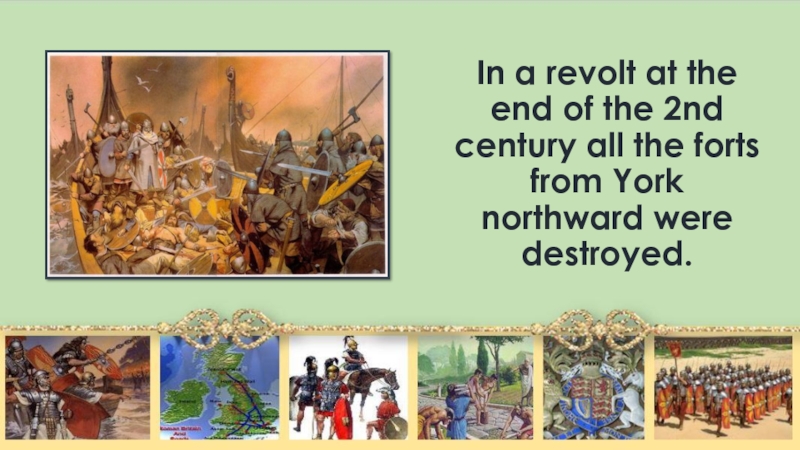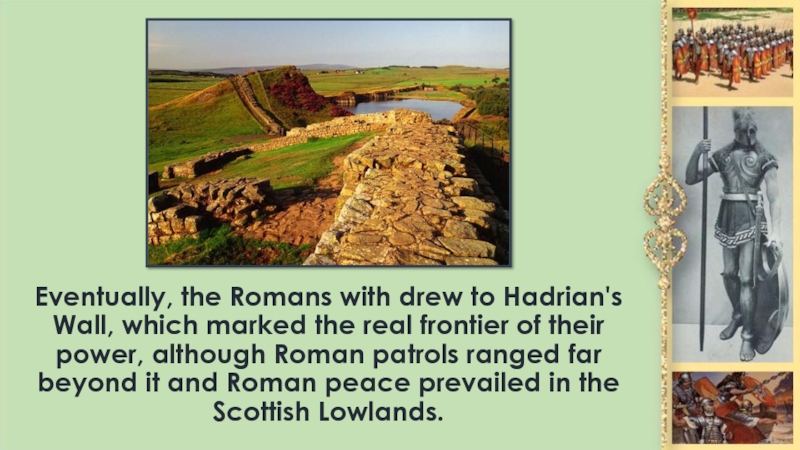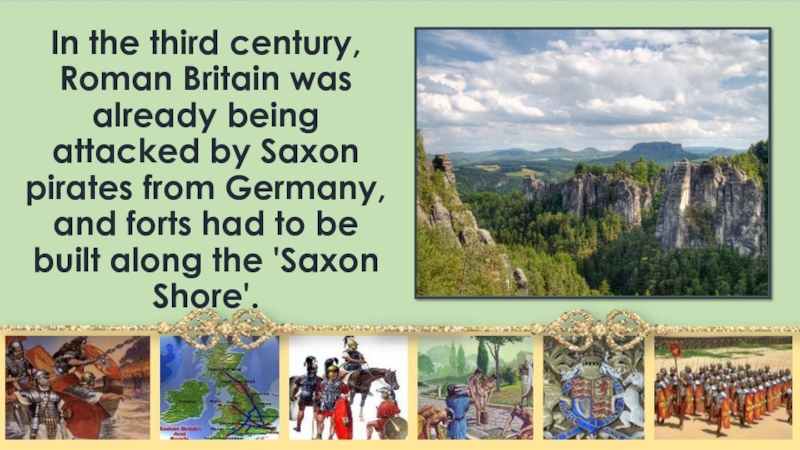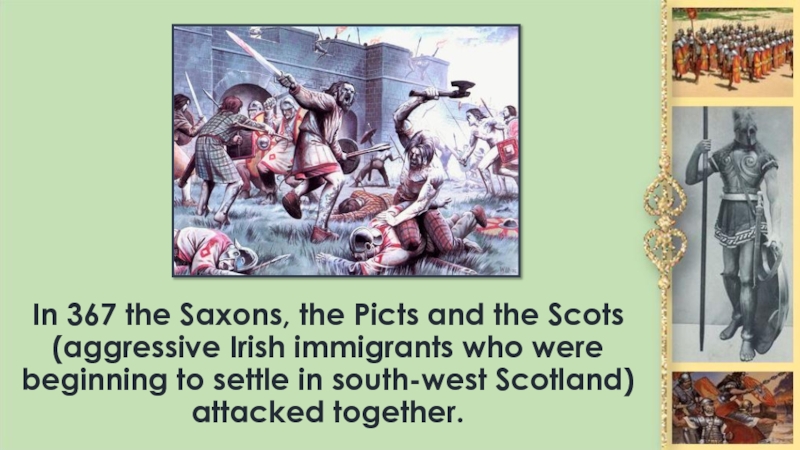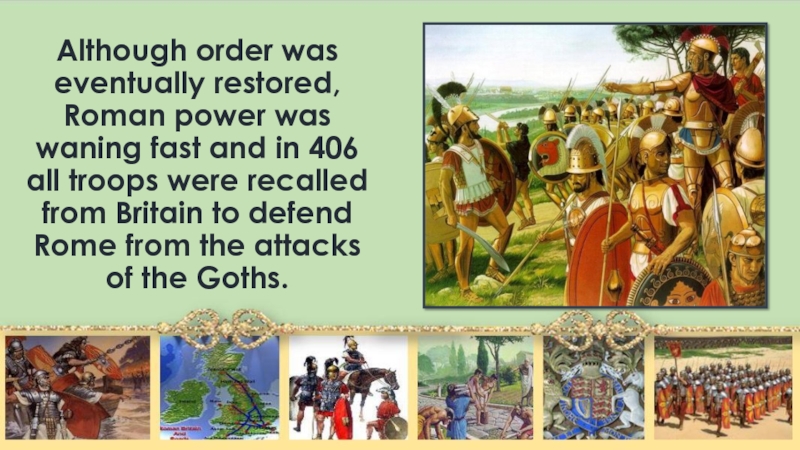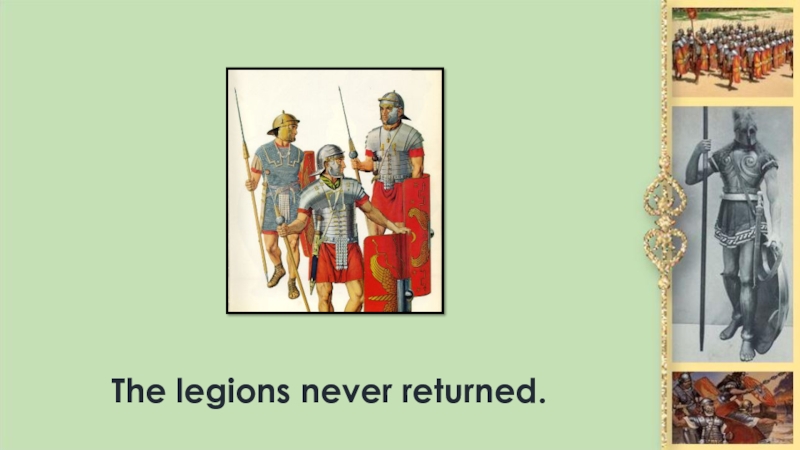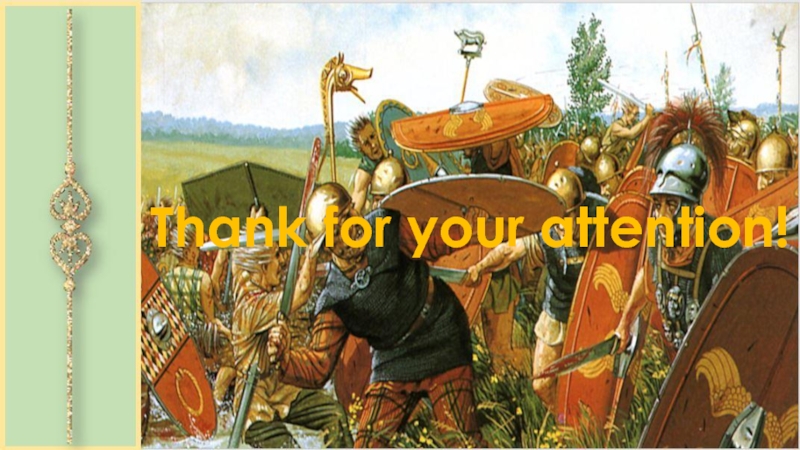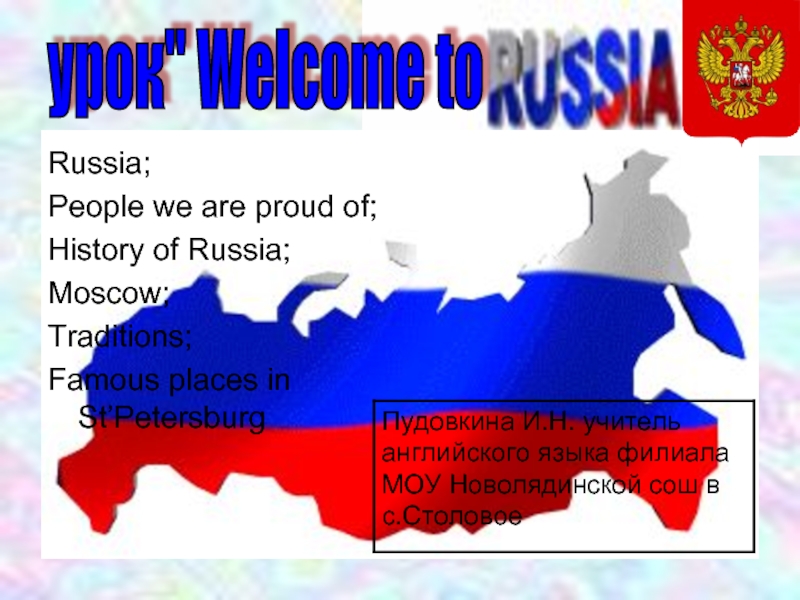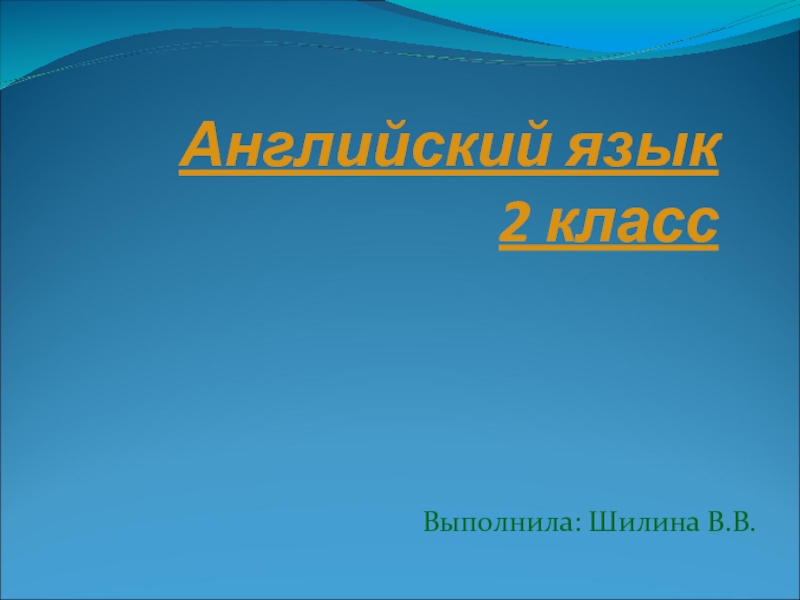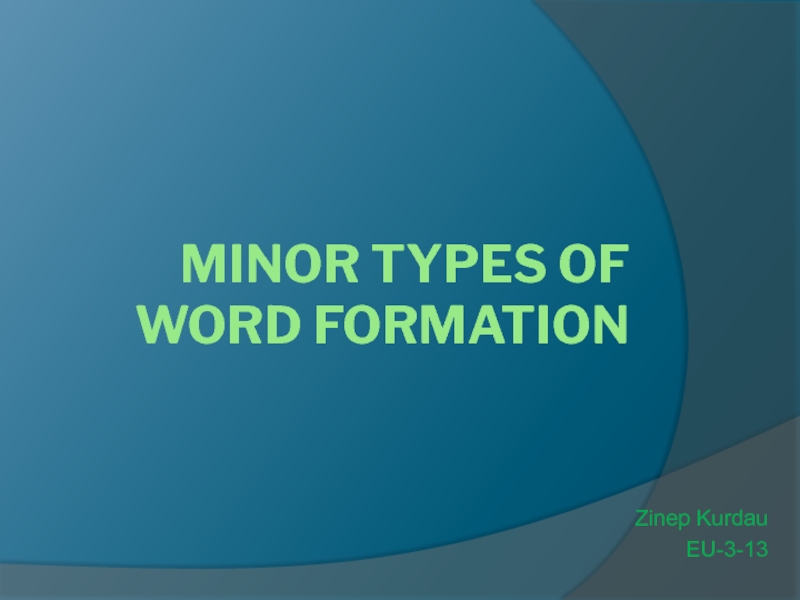Слайд 1ГКОУ СО ЕШИ «Эверест»
Учебный информационный проект
по английскому языку
История Англии:
завоевание
Британии
римлянами
Выполнил: ученик 8 класса Павлов Артём
Руководитель: Берлет И. В.
Екатеринбург,
2016
Слайд 2The history of England
By Pavlov Artyom
Teacher: Berlet I. V.
Ekaterinburg, 2016
Britain
conquered by the Romans
Слайд 3In 55 ВС Britain was invaded by Julius Caesar, а
Roman general and governor of Gaul (France), soon to be,
in all but name, the first Roman emperor.
Слайд 4At that time the city of Rome was about 700
years old, but the Roman empire was much younger. As
late as 211 ВС Rome had narrowly escaped destruction by the Carthaginian general, Hannibal.
Слайд 5But Hannibal's defeat left Rome without а serious rival, and
by Caesar's time it controlled an empire that stretched from
Spain to the Near East.
Слайд 6Two places more different than imperial Rome and Celtic Britain
could hardly have existed. Roman society was urban, with grand
public buildings built of marble. Britain was а country of mud huts, with no settlement large enough to be called а town. An upper-class Roman lived in greater comfort than any Britisher before the 15th century. His house even had central heating.
Слайд 7The Romans, as heirs of the civilization of Ancient Greece,
were interested in art, philosophy and history (Caesar himself wrote
good military history in simple prose). The British could neither read nor write.
Слайд 8They were not savages, and in some ways Celtic art
was superior to Roman, or so it seems to us,
but the Romans naturally thought of them as hopelessly primitive barbarians. То the Romans - and to many non-Romans too - there was but one worthwhile form of society, and that was their own. The only useful function of other peoples was to contribute to the glory of Rome.
Слайд 9Britain was а mysterious isle to the Romans. But Caesar
knew it contained valuable minerals, and he knew also that
the British were helping their cousins in Gaul against Rome. Не decided on invasion.
Слайд 10Caesar had another motive - personal glory. Landing on an
open beach near Deal, the Romans fought their way ashore,
beat the assembled British, and accepted tributes from some of the chiefs. But а storm wrecked their ships and they had to scramble back to Gaul.
Слайд 11Next year Caesar came again, this time with а much
larger expedition - five legions and 800 ships. The British
tribes sank their differences, uniting under the leadership of Cassivellaunus, and it took some time for Caesar to work out а way of dealing with the British chariots. The Romans were not used to this form of warfare, as chariots were obsolete in Gaul.
Слайд 12But Cassivellaunus failed to stop the attack. Caesar advanced through
Kent, crossed the Thames at London, and marched through the
thick forests of Essex towards Colchester. When an attack on the Romans' naval camp failed, the British decided to come to terms. Caesar took hostages and imposed an annual tax. Then he sailed back to Gaul.
Слайд 13The British had been defeated but not conquered, and for
nearly а hundred years afterwards no Roman army appeared in
Britain. Caesar's expeditions had shown that Britain would not be conquered easily.
Слайд 14Between 54 BC and AD 43, the date of the
Roman conquest, Lowland Britain prospered. The country enjoyed the benefits
of trade with the great Roman Empire without the disadvantages of Roman rule. Roman merchants travelled to Britain, and Roman influence was strong. Britain was 'Romanized' before the Roman conquest.
Слайд 15In AD 43 the Romans landed at Richborough, Kent, and
advanced steadily north and west. They were chiefly interested in
the fertile south-east, but they soon found that the minerals they wanted (lead, copper) lау in the mountainous parts. They found, too, that having conquered part of Britain it was hard to draw а line and say: that is where we stop.
Слайд 16The British were still not united, and the main opponent
of the Romans, а clever king of the Catuvellauni named
Caratacus, was unable to create а national coalition.
Слайд 17Не did his best, and when defeated in central England
he retired to south-east Wales, where the Silures resisted the
Romans more fiercely than any other people.
Слайд 18Then, as Roman strength built up in the West Country,
Caratacus fell back to Snowdonia, where the Ordovices kept up
the struggle. After а hard battle, the Romans captured their stronghold near Caersws, and all of Caratacus's family were taken prisoner. Не fled to Brigantia (northern England), but the queen of the Brigantes favoured Rome and had him arrested.
Слайд 19Не was sent in chains to Rome. There, he was
triumphantly displayed before the people as а symbol of the
Roman victory. Caratacus looked in wonder at the rich and powerful city. 'Why', he asked his captors, 'with all these great buildings, do you still want our poor huts?’
Слайд 20The Romans brought their campaign in Wales to а conclusion
by conquering the Isle of Anglesey, off North Wales. Anglesey
was а centre of the cult of the Druids, а class of priests (or witchdoctors) who had great influence among the British and knew that Rome's victory would mean their deaths.
Слайд 21The Romans, who were tolerant of most local customs, were
determined to destroy the Druids, as they disliked their ritual
of human sacrifice.
Слайд 22As the Romans looked across the Menai Straits, they saw
а hoard of hostile warriors, urged on to battle by
mad-looking women in black and by the robed figures of the Druids, lifting their bloody hands to heaven to сall down curses on their enemies.
Слайд 23Grimly, the Romans paddled their boats across the straits, the
cavalry swimming their horses alongside. They cut their way through
the rabble opposing them and slaughtered the Druids among their own altars.
Слайд 24At this moment (AD 61) а dramatic revolt broke out
on the opposite side of the country. The king of
the Iceni had died, and the Romans refused to recognize his daughters as his successors.
Слайд 25 The Roman soldiers in East Anglia were not well
led and they behaved stupidly towards the local people. They
swaggered brutally through the country, stealing what they fancied. They raped the king's daughters and gave their mother, Queen Boudicca, а whipping.
Слайд 26Suddenly the country was in flames. Boudicca's people were joined
by others, including many who had first welcomed the Romans
but had since suffered from their greed and pride.
Слайд 27 А wild army swept down upon Colchester. London and
St Albans fеll to the rebels, who killed all the
Roman colonists.
Слайд 28Meanwhile, the governor hastily gathered his troops and, with 10,000
men, he met Boudicca in battle north-west of Towcester. The
rebels were defeated. Boudicca died soon afterwards, and the revolt fizzled out.
Слайд 29Probably, the Romans could have conquered all of Britain if
they had been determined to do so. However, Britain was
on the fringe of their empire; it was small, and expensive to govern. Some Romans thought it was not worth the cost.
Слайд 30Julius Agricola - the best of the governors of Britain,
came near to completing the conquest before he was recalled
to Rome. Не advanced north across the Forth and the Тау…
Слайд 31…and in AD 84 he defeated the Caledonians of northern
Scotland at the great battle of Mons Graupius. Roman historians
say that 10,000 Caledonians were killed, and only 360 Romans.
Слайд 32But soon afterwards the Romans decided to retreat. After some
serious setbacks in the north, the Emperor Hadrian marked the
frontier with а great wall across Britain. Built in the 120s, the wall was the largest structure in the Roman Empire.
Слайд 33Although Hadrian's Wall was such а vast engineering project, the
Romans were never certain that it was in quite the
right place.
Слайд 34 In 142 а second wall was built farther north.
Serious outbreaks continued; the Picts attacked from Scotland and the
Brigantes from Yorkshire.
Слайд 35In а revolt at the end of the 2nd century
all the forts from York northward were destroyed.
Слайд 36Eventually, the Romans with drew to Hadrian's Wall, which marked
the real frontier of their power, although Roman patrols ranged
far beyond it and Roman peace prevailed in the Scottish Lowlands.
Слайд 37In the third century, Roman Britain was already being attacked
by Saxon pirates from Germany, and forts had to be
built along the 'Saxon Shore'.
Слайд 38In 367 the Saxons, the Picts and the Scots (aggressive
Irish immigrants who were beginning to settle in south-west Scotland)
attacked together.
Слайд 39Although order was eventually restored, Roman power was waning fast
and in 406 all troops were recalled from Britain to
defend Rome from the attacks of the Goths.
Слайд 42http://i.ucrazy.ru/files/i/2008.10.11/1223723324_07.jpg
http://www.history-for-kids.com/images/boudica-warrior-queen.jpg
http://4flaga.ru/105-britain-conquered-by-the-romans.html
http://img-fotki.yandex.ru/get/6619/137106206.195/0_990a3_23bd9580_orig.jpg
http://www.tourprom.ru/site_media/images/countries/angliya-istoriya_26082013185120.jpg
http://4flaga.ru/picterra/hb_romans.jpg
http://4flaga.ru/picterra/hb_romebrit.jpg
http://ichef.bbci.co.uk/images/ic/1200x675/p01gn3h5.jpg
http://img1.joyreactor.cc/pics/comment/full/%D0%A0%D0%B8%D0%BC-angus-mcbride-%D0%98%D1%81%D1%82%D0%BE%D1%80%D0%B8%D1%8F-%D0%B2%D0%BE%D0%B8%D0%BD%D1%8B-1602577.jpeg
http://1.bp.blogspot.com/-H-Xmim0tMUM/UqHhz2WM8tI/AAAAAAAACSo/CZTLn8_a7VU/s1600/3099735_com_roman_invasion_of_britain2.jpg
http://dazpix.co.uk/wp-content/uploads/portfolio_content/2014_rotlp/1_calleva_atrebatum_master.jpg
http://images-mediawiki-sites.thefullwiki.org/02/1/8/1/95334821664749612.png
http://www.saieditor.com/falco/images/londinium.jpg
http://goforproxy.appspot.com/4flaga.ru/im/history-of-britain.jpg
Sources
http://pbs.twimg.com/media/B_QwyC-W8AECa1v.jpg:large
http://www.luciuscorneliussylla.fr/image/guerrecivile2.jpg
http://i1296.photobucket.com/albums/ag18/limsloon/RomeSplash_zps9c3d05ce.jpg
http://www.temporamagazine.com/wp-content/uploads/LEGIONES-ROMANAS0004-1.jpg
http://barbgallo.com/1/roman-britain-map-68.jpg
http://ciwar.ru/wp-content/uploads/2012/03/val_antonina.jpg
http://www.northern-heritage.co.uk/phpmedia/products/orgs/4df2cbf6cddb251a4812c65722a047e4.jpg
http://www.archipictor.com/wp-content/uploads/2015/11/embleton_hadrian2.jpg
http://www.milindajay.com/wp-content/uploads/2012/10/building-portris-dubris.jpg
http://www.english-heritage.org.uk/remote/www.english-heritage.org.uk/content/properties/birdoswald-roman-fort-hadrians-wall/gallery-for-birdoswald-roman-fort-hadrians-wall/galleryj050053.jpg?quality=60
http://xmnicol.blogaliza.org/files/2012/10/Villaromana11.jpg
http://images.fineartamerica.com/images-medium-5/the-departure-of-the-romans-henry-a-payne.jpg
http://ciwar.ru/wp-content/uploads/2013/08/rimliane_v_britanii.jpg
http://m.cdn.blog.hu/le/lemil/image/Fredddy/tumblr_m9l08nbw1L1ree52ho1_1280.jpg
